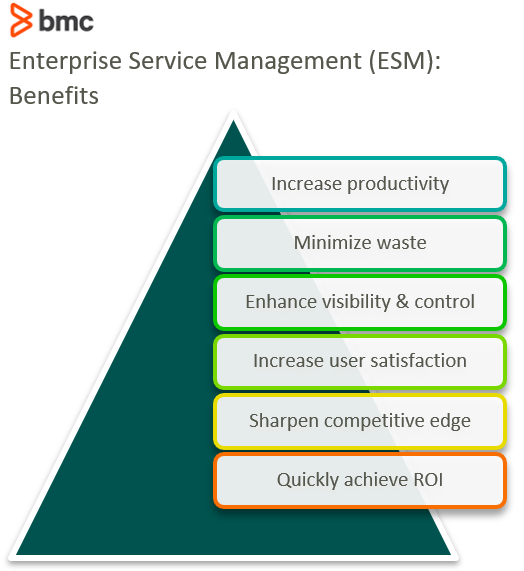Service management is a set of processes used in designing, operating, and controlling the delivery of IT services. With a combination of tools, processes, and people, Service Management provides a framework for organizations to deliver IT services while enabling collaboration between internal cross-functional teams and the clients.
As an important aspect of digital transformation, the key to successful service management is the continuous, streamlined approach to maintaining and delivering IT services. While there are several frameworks that organizations can leverage to improve their service management practices, it’s crucial to follow the best practices after diligently referring to an organization’s use case. With that in mind, the following points typically form the basis of creating an effective service management framework. An adopted framework should:
- Account for the current state of your organization’s environment.
- Consider emerging technologies and practices to ensure that your employees are getting the most out of your IT services.
- Deliver the customers’ expectations.
In this article, we delve into two of the service management approaches and their major differences : IT Service Management (ITSM) and Enterprise Service Management (ESM).
What is IT Service Management ITSM?
IT Service Management (ITSM) is a strategic approach to deliver IT as a service. It comprises a set of workflows and tools for optimally creating, implementing, delivering, and managing IT services for customers focusing on customer needs. The goal of ITSM is to provide processes and tools to IT teams to help them manage end to end IT services while improving business performance, increasing productivity, and enhancing customer satisfaction.
Additionally, ITSM focuses on facilitating the core IT functions of an organization, helping the business achieve its goals while managing costs by utilizing the IT budget maximally.
ITSM benefits businesses in the following ways:
- Supports agility and adaptability by helping to innovate faster to handle market changes
- Better productivity and faster incident resolution
- Preemptive anticipation and resolution of issues before they occur
- Improved performance across the board as a result of increased IT availability
ITSM focuses on optimizing IT for the organization, and there are different frameworks of best practices, processes, and tools that come into play to achieve this.
ITSM Processes
Although technology plays an integral role in delivering IT services, some procedures must be followed to ensure efficient IT service delivery encompassed in ITSM processes. Some of these core ITSM processes include:
- Change Management helps handle all IT infrastructure changes to provide transparency and prevent bottlenecks.
- Incident Management is concerned with responding to and resolving service issues or incidents promptly and appropriately to reduce downtime or service interruption.
- IT Asset Management involves accounting for, deploying, maintaining, upgrading, and disposing of an organization’s assets in a timely manner.
- Knowledge Management creates, uses, manages, and shares the information assets of an organization to achieve business objectives.
- Problem Management assists with locating and figuring out approaches to eliminate the underlying causes of incidents to avoid repeat occurrences.
- Service Request Management is concerned with managing all IT service requests like access requests, software and hardware upgrades.
ITSM Frameworks
ITSM frameworks are best practices and formalized guidelines that provide a systematic approach to implementing ITSM for organizations. These help organizations set their ITSM strategy while monitoring how they implement the chosen strategy. However, a crucial thing to note is that these frameworks are not ‘rules’ to follow strictly and are open to interpretation.
There are different ITSM frameworks as below, and organizations can combine them to achieve varied IT service delivery needs:
- ITIL®. ITIL is the most popular, globally recognized, and widely adopted framework for ITSM. It emphasizes a comprehensive approach to ITSM based on principles such as focusing on value, keeping it simple and practical, while allowing progressive iterations with feedback.
- DevOps focuses on achieving faster service delivery by applying agile practices to foster collaboration between cross-functional teams.
- ISO 20000. A global IT service management standard that helps organizations establish IT service management processes to align with their business needs and international practice.
- Control Objectives for Information and Related Technologies (COBIT). COBIT is a framework developed by ISACA as a support tool for managers that helps them align IT goals with business goals by implementing better IT governance.
- The Business Process Framework (eTOM). The eTOM framework is a collection of best practices, models, and standards for IT service delivery developed by the TeleManagement Forum.
- Others frameworks include FitSM, SAFe, and IT4IT Reference Architecture.
ITSM Tools
There are a variety of tools that enable the delivery of IT services by supporting associated tasks and workflows involved like incident, change management, service requests, etc. However, before choosing a particular ITSM solution, there are a few points to keep in mind when analyzing the options.
- The setup and activation process: A simplified setup and activation process with intuitive steps and knowledgeable support staff enhances the adoption process.
- User-friendliness: The ITSM application should be intuitive, easy to use, and navigate to promote full adoption.
- Should facilitate organization-wide collaboration.
- Should be adaptable and flexible for your business needs as they evolve.
(View the Gartner® Magic Quadrant™ for ITSM Tools.)
What is Enterprise Service Management (ESM)?
First coined in 2002 by IBM as part of their strategy to address business-centric use-cases, ESM is a set of tools, processes and methodologies that aims to offer visibility into all aspects of service management and delivery across the entire enterprise.
ESM utilizes ITSM capabilities and processes in business areas of the organization, going beyond IT, to enhance operational efficiency and service delivery. It essentially takes service management principles, structures, and technologies from the ITSM concept and applies them to various business verticals of the organization such as Human Resources (HR), Legal, Finance, Marketing, etc.
(Read our full explainer on ESM.)

ESM vs ITSM similarities
As ESM acts as an extension of ITSM, both frameworks share fundamental similarities in how they operate. Though ESM inherits all benefits of ITSM, in particular, ESM offers the following benefits:
- Cost-saving through efficient workflows
- Increased customer satisfaction through continuous feedback and support
- Building long term relationships with customers
ESM vs ITSM differences
At the same time, there are a few differences that can be summed up under the scope of application of IT to service management.
- The key difference lies in the fact that ITSM primarily focuses on organizational processes related to IT services. These include core IT services such as system upgrades, access control, and application deployment. ESM, on the other hand, applies to a wide range of organizational processes going beyond IT such as human resources, employee onboarding processes, customer service or resource procurement.
- ITSM focuses on the technical aspects of IT operations while ESM focuses on the business-oriented use cases.
- ESM can address non-technical needs that ITSM might not cover. An example of this need could be the need for human resources to maintain a specified amount of data privacy. Another example is the need to ensure safety and compliance regulations such as HIPAA, GDPR, etc.
Summary
Service management is an integral part of an organization’s operations, either at the IT level or a company-wide level, that ensures optimum performance, efficient & effective delivery, and ultimately offers enhanced business value.
To have better planning and management, IT operations are typically broken down into multiple services. Service management ensures smooth delivery of these qualitative and standardized services that support organizational activities. Efficient and effective service management frameworks not only facilitates organizations to adapt better to changing customer requirements but also helps in developing long term relationships with the customers.
The ITSM approach addresses service management at the IT level while ESM extends the principles and processes of service management to various departments and business verticals of an organization. Though the goals of ESM and ITSM overlap to an extent, both adopt similar processes and tools to manage services of an organization.
Related reading
- BMC Service Management Blog
- ITIL & ITSM Roles and Responsibilities
- ITSM vs ITOM: Service Management & Operations Management Explained
- Agile ITSM: How Agile & Service Management Can Work Together
- The State of ITSM Today
- What’s KCS®? Knowledge-Centered Service Explained
These postings are my own and do not necessarily represent BMC's position, strategies, or opinion.
See an error or have a suggestion? Please let us know by emailing blogs@bmc.com.






